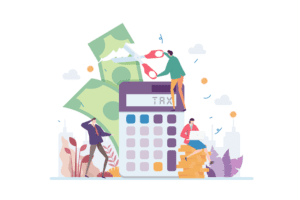
For example, a business might observe that, in the past, 2 percent of its total sales has incurred an expense due to an unretrievable debt. In order to plan for this loss, a business with a reported $100,000 in sales would account for $2,000 in expenses related to bad debts. The Percent of Sales Method is a valuable tool for businesses looking to forecast expenses and revenues efficiently. By using historical data to establish consistent percentages, companies can create realistic and manageable financial plans. While the method is simple and easy to apply, it’s essential to be aware of its limitations and complement it with other forecasting techniques for a comprehensive financial strategy. Understanding and utilizing the Percent the percentage of sales method of Sales Method can help learners and professionals alike make informed and strategic business decisions.
Would you prefer to work with a financial professional remotely or in-person?
You know your business better than anyone, so there might be instances in which tweaking the forecasted amounts will produce a more reliable forecast. If your sales forecast does not rely on investing in new capacity, then your depreciation expense will be unaffected. In that case, you may want to set depreciation at its pre-existing level and then set all other operating expenses as the appropriate percentage of sales. Other adjustments might result from assuming such things as greater worker productivity, lower or higher wholesale costs or changes in tax rates. Remember that you’re devising this forecast to help you make better decisions; don’t be afraid to modify the information going into the forecast to better reflect business conditions as you know them.

Calculate forecasted sales.

This is commonly done by percentage — if you know the percent amount your sales will increase, you can apply that to all line items as well, both assets and expenses. This includes things like accounts payable, accounts receivable, cash, cost of goods sold (COGS), fixed assets, and net income. The percentage of sales method definition refers to businesses’ forecasting tools to predict multiple liabilities, expenses, and assets based on their sales data.
Company
More information on the https://www.facebook.com/BooksTimeInc/ source data that underlie the estimates is available in the “Key Source Data and Assumptions” file on BEA’s website. Compared to the first quarter, the acceleration in real GDP in the second quarterly primarily reflected an upturn in private inventory investment and an acceleration in consumer spending. These movements were partly offset by a downturn in residential fixed investment.
This percentage is typically derived from historical data, making the process relatively simple and intuitive. For example, if a company historically spends 10% of its sales revenue on advertising, it can predict future advertising expenses by applying this percentage to its projected sales. Management of XYZ Company meets on an annual basis to discuss the performance of the company and discuss the financial statement outlook. To do this, a special set of financial statements is prepared with percentages added to each line item.
What is sales revenue? Ultimate guide on how to calculate it

This could happen because of a number of supply issues or environmental changes. Material prices or utility rates could have gone up uncontrollably during the year for example. From there, she would determine the forecasted value of the previously referenced accounts. Once she has the specific accounts she wants to keep tabs on, she has to find how they stack up to her overall sales figures.
- Personal saving was $1.13 trillion in the second quarter, an upward revision of $74.3 billion from the previous estimate.
- Remember that you’re devising this forecast to help you make better decisions; don’t be afraid to modify the information going into the forecast to better reflect business conditions as you know them.
- This is commonly done by percentage — if you know the percent amount your sales will increase, you can apply that to all line items as well, both assets and expenses.
- This is different from the Aging of Accounts Receivable Method where a journal entry is done to bring the balance in the account to the desired balance.
- Gross domestic income (GDI) is the sum of incomes earned and costs incurred in the production of GDP.
Profits of domestic nonfinancial corporations increased $108.8 billion, an upward revision of $79.6 billion. Rest-of-the-world profits decreased $18.8 billion, a downward revision of $0.7 billion. In the second quarter, receipts increased $4.4 billion, and payments increased $23.1 billion. Current‑dollar GDP increased 5.6 percent at an annual rate, or $392.6 https://www.bookstime.com/ billion, in the second quarter to a level of $29.02 trillion, a $9.5 billion larger increase than the previous estimate (tables 1 and 3).

Legutóbbi hozzászólások